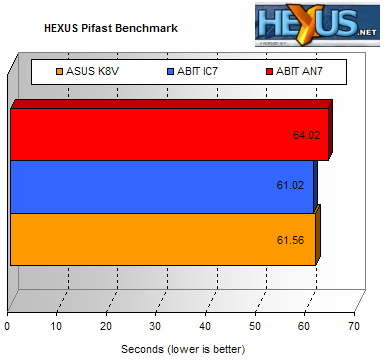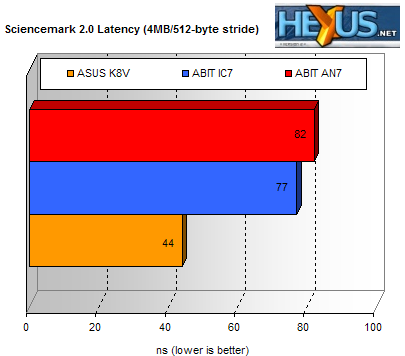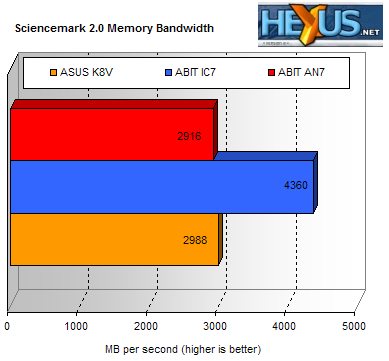Memory Tests
Memory subsystem based tests first, designed to check that the memory controller on any motherboard (or CPU) is performing as it should.Our own custom Pifast test first, to ten million places. nForce2 Ultra 400 uses a chipset based memory controller, giving rise to higher latency, compared to the on-CPU controller that Athlon 64 enjoys. That latency disadvantage, along with half the L2 cache size of Athlon 64 means that XP3200+ is relying on 200MHz of extra CPU frequency to keep pace with the ASUS and Model 3200+ Athlon 64 combination. The P4 platform will be taking a different route to performance nirvana, instead relying on plenty of CPU frequency and more usable CPU-to-memory bandwidth than the AMD systems, to offset any IPC shortfall and cache level performance.

The AN7 has no problem with putting up nice numbers as far as Socket A systems go, the XP3200+ and Corsair doing their best. However the inherent architectural disadvantages compared to the Athlon 64 system means it loses to it by a fair margin. The P4 applies brute processing force and a low latency memory controller to keep pace. Let's check out the latency with Sciencemark 2.0.

Comparable main memory latency performance to P4/Canterwood as we make the CPU fetch memory from the memory controller, rather than L2 cache, but neither can match the on-CPU memory controller of Athlon 64. Compared to other nForce2 Ultra 400 boards running the same memory timings, AN7 doesn't have any latency problems. Sciencemark 2.0 also shows us available memory handwidth.

A single memory channel on Athlon 64 and DDR400 memory means a maximum of 3200MB/sec for that platform, despite the memory controller running at CPU frequency. Two memory channels on nForce2 and DDR400 memory means a theoretical 6400MB/sec. However with the CPU running a 200MHz front side bus frequency, accessing the memory controller using a 64-bit path, 3200MB/sec (200MHz x 8 bytes) is all the CPU can make use of. That's all a STREAM based benchmark can possibly measure using the CPU. But nForce2 allows other system components to access the excess, including the Dolby encoder and the Ethernet controller, so two memory channels on nForce2 is a performance boost.
Compared to other nForce2 boards, AN7 is no slower than recently reviewed and evaluated boards I've looked at recently.
CPU bound tests next.









